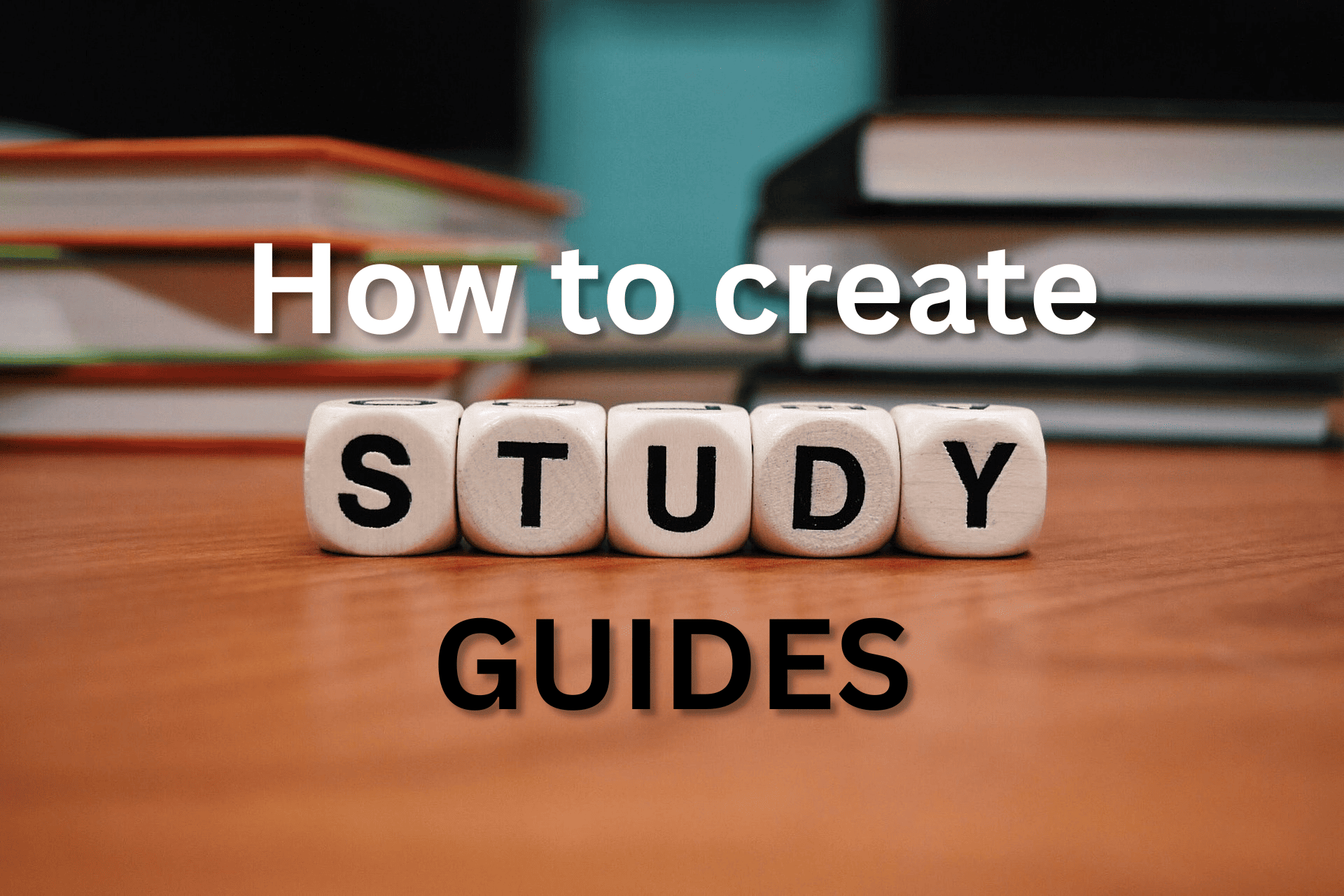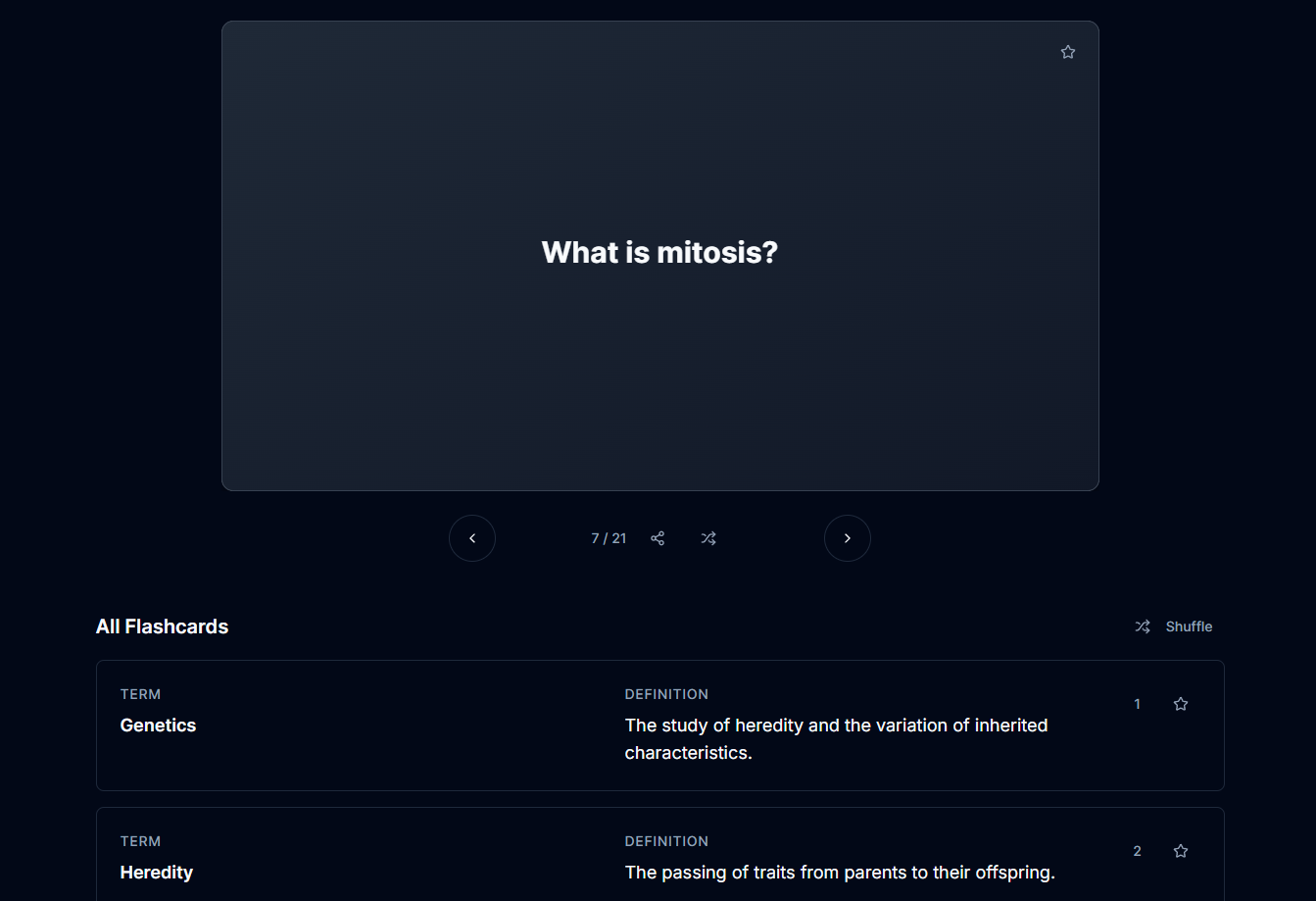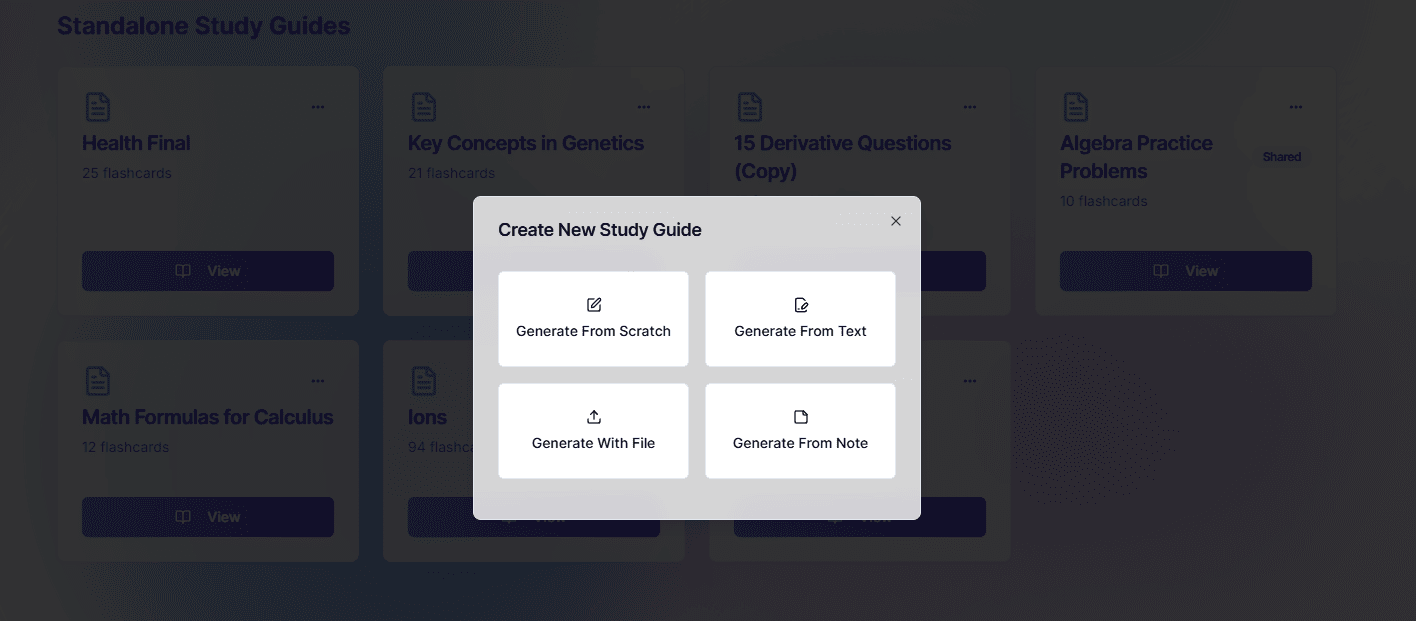
As a high school or college student, you've probably faced situations where exams seem overwhelming. You have tons of notes, textbooks, PDFs, and presentations: yet the information feels scattered and hard to digest. That's where study guides come in! They're a lifesaver when you're cramming or just looking to organize your notes for effective studying.
In this blog, you'll learn exactly what a study guide is, why they're crucial for academic success, how you can create one manually or using cool AI tools like BigEdits, and finally, how you can use your guide effectively to boost your productivity.
A study guide isn't just a bunch of notes thrown together; it's a structured summary of your coursework, designed to make studying easier and more effective. Think of it like a roadmap for your brain: a way to organize and simplify everything you need to know.
Understanding the different types of study guides can help you pick the best one for your studying needs:
These guides break down large topics into smaller, digestible key points, in the form of bullet points or headings. If you're reviewing history or literature, an outline format is perfect to keep track of dates, characters, and events.
Example:
Great for visual learners, these maps show how different concepts are connected, helping you understand relationships and hierarchies.
Example: A concept map for biology might show how photosynthesis connects to light intensity, glucose production, and pigments.

Flashcards involve writing questions or key terms on one side and answers on the back. They're excellent for active recall: a proven technique to boost memory.
Example:
You might wonder, "Aren't my notes enough?" Well, here's why adding a study guide to your study routine can make a huge difference:
Creating your own study aid makes your brain actively engage with the material. This active participation significantly boosts your short-term and long-term memory, helping you recall information more quickly during exams.
Ever looked at your notes and felt lost? A study aid puts structure around your learning. It organizes your notes into clear sections, helping you see the bigger picture and how different concepts connect.
Creating a good study guide requires a bit of planning. Here's how you can easily get started:
First, collect all your resources: textbooks, notes, lecture slides, PDFs: everything relevant. This ensures you don't miss important points and saves you tons of time later.
Pick an effective study guide method based on your learning style or the subject matter. For example, outlines are great for history, while concept maps might be better for biology.
If you prefer a traditional approach, here are proven methods:
Take detailed notes of important information and summarize them into concise bullet points. Use headings and subheadings to clearly divide topics.
Start with the main concept at the center and branch out with subtopics. Visual connections help reinforce your understanding.
Write terms or questions on one side and explanations on the other. Regularly quiz yourself for best results.

If manual creation sounds tedious, consider using an AI study guide maker like BigEdits Here's why it's awesome:
An AI study guide maker is an advanced tool that uses artificial intelligence to automatically summarize your notes and textbooks into neatly structured study guides. It's super helpful, especially when you need to save time!

Here are some ways BigEdits allows you to review your study guides with its suite of study tools:
Creating a study guide is just the start. Using it effectively is the key to getting the most out of your study sessions. Here are some effective studying techniques you can apply with your study guide:
Make it a habit to review your guide frequently. Even a short 15-minute daily review session can significantly improve your recall. Answering questions from your study guide every day is another great way to review.
Instead of passively reading, actively test yourself using your study guide. Ask yourself questions, try recalling information without looking, and use flashcards to solidify your memory.
Studying in groups can be incredibly productive. Share your study guides with peers, quiz each other, and discuss complex topics. You'll be amazed at how much more clearly you understand concepts after group discussions.
Creating study guides can go wrong if you aren't careful. Here are pitfalls to avoid:
Overloading Information: Keep your study guide concise. Overloading it with unnecessary details can overwhelm you.
Procrastination: Don't wait until the night before exams. Start early to keep stress levels low.
Not Personalizing Your Guide: Customize your guide to match your learning style, or it won't be as effective.
Creating a study guide doesn't have to be complicated. With manual methods or powerful AI tools like BigEdits, you can quickly organize your notes into clear, effective study materials. Remember, the goal isn't just creating the guide, it's about using it effectively to ace your exams.
Happy studying!